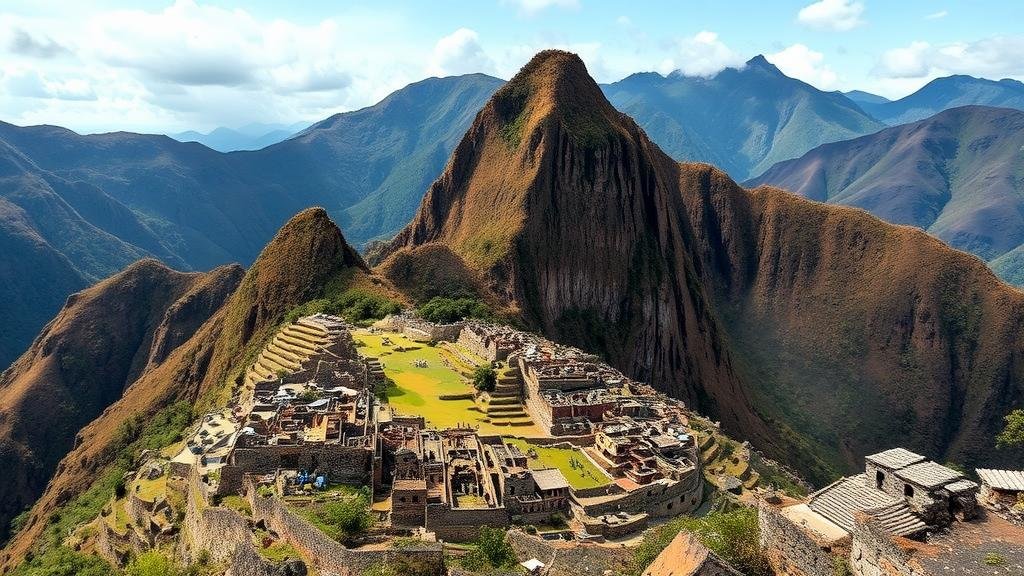Combining folklore and geological studies to uncover lost cities in volcanic regions.
Combining Folklore and Geological Studies to Uncover Lost Cities in Volcanic Regions
The intersection of folklore and geological studies presents a fascinating approach to uncovering the mysteries of lost cities, particularly in volcanic regions. This interdisciplinary method harnesses local myths and legends while applying scientific analysis to geological phenomena. The result is an enriched understanding of human history, resilient civilizations, and the forces of nature that shaped them.
The Historical Context of Volcanic Regions
Volcanic regions are often associated with catastrophic events that can reshape landscapes and obliterate human habitation. For example, the eruption of Mount Vesuvius in 79 AD led to the burial of the Roman cities of Pompeii and Herculaneum. These cities provide pivotal evidence of Roman life frozen in time. But, many other civilizations have also likely been lost to similar events, now only existing in the collective memory of folklore.
The Role of Folklore
Folklore serves as a bridge to understanding the human experiences tied to geological events. Legends often preserve fragments of historical truths, encapsulating the fears and memories of communities impacted by volcanic eruptions. For example:
- The legend of the Lost City of Ciudad Blanca in Honduras, also known as the White City, is believed to be linked to the ancient civilization of the Lenca people who vanished following a series of volcanic eruptions.
- In Indonesia, the tales surrounding the eruption of Krakatoa in 1883 have persisted through generations, illustrating the destructive power of the volcano and its influence on local habits and customs.
Geological Studies: An Overview
Geologists utilize various methods to study volcanic activity and its aftermath. By examining lava flows, ash deposits, and soil composition, they can reconstruct the physical characteristics of past eruptions. Techniques such as radiocarbon dating and thermoluminescence help date artifacts and geological samples, providing a clearer timeline of when human habitation may have occurred. For example, research around the Santorini caldera in Greece has revealed settlements that were destroyed in the 16th century BC due to volcanic eruptions.
Case Studies: Successful Integrations
The amalgamation of folklore and geological studies has led to tangible discoveries in various locations:
- Cinco Volcanes in Mexico: Folklore from the indigenous peoples of Mexico spoke of lost cities hidden among the five volcanoes. Geological surveys later revealed remnants of a civilization, believed to have thrived in the area before being buried by volcanic eruptions.
- Mount Taal, Philippines: Local legends detail encounters with spirits post-eruption, preserving knowledge of volcanic activity in historical accounts. Geological data has corroborated these events, leading researchers to investigate the surrounding areas for hidden settlement remains.
Challenges in Synthesizing Folklore and Science
While combining folklore with geological studies is a promising approach, it is not without challenges. Differentiating between myth and fact can lead to misinterpretations. Folklore may exaggerate events or blend with other cultural narratives, complicating the research process. Also, there is the risk of overlooking important geological evidence in favor of anecdotal legends.
Real-World Applications and Future Directions
Researchers and archaeologists continue to explore the synergy of folklore and geology to uncover lost cities. Collaborative projects between local communities and scientific teams can enhance the accuracy of findings and elevate community engagement. For example, integrating indigenous knowledge into contemporary geological assessments can provide a more comprehensive historic overview and spur ecotourism initiatives, creating economic opportunities for local populations.
For those interested in pursuing this intriguing field of study, consider the following actionable takeaways:
- Engage with local communities to gain insights into their folklore and history.
- Stay abreast of technological advancements in geological surveying methods.
- Strive for a multidisciplinary approach, integrating archaeology, anthropology, and environmental sciences.
Conclusion
The integration of folklore with geological studies not only enhances the search for lost cities in volcanic regions but revitalizes the history of human civilization in the face of natural disasters. This dynamic approach invites researchers and local communities to collaborate, preserving vital stories while uncovering the remnants of past societies.



